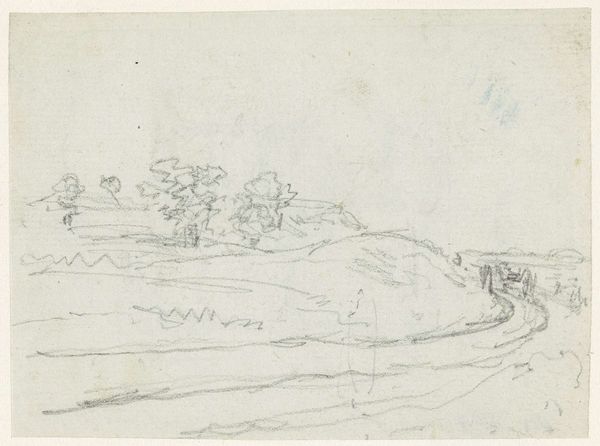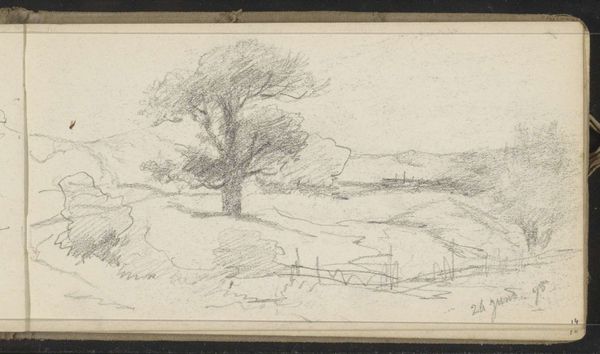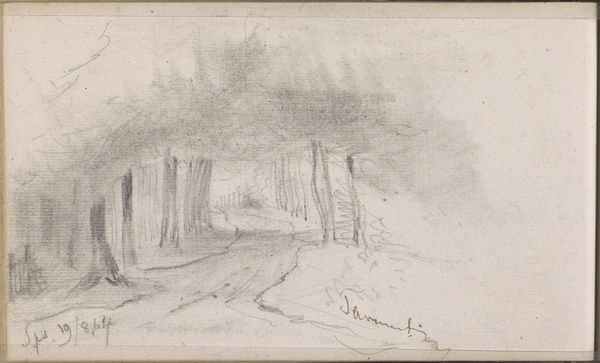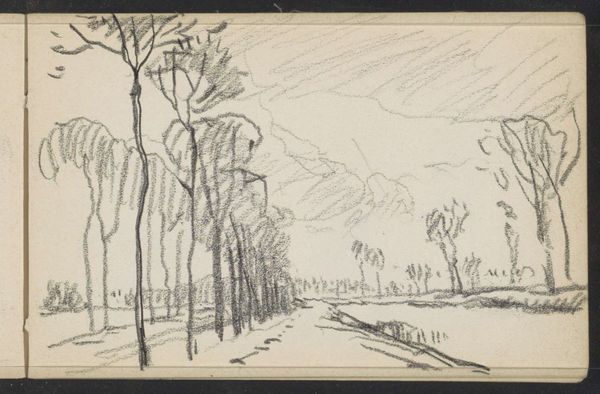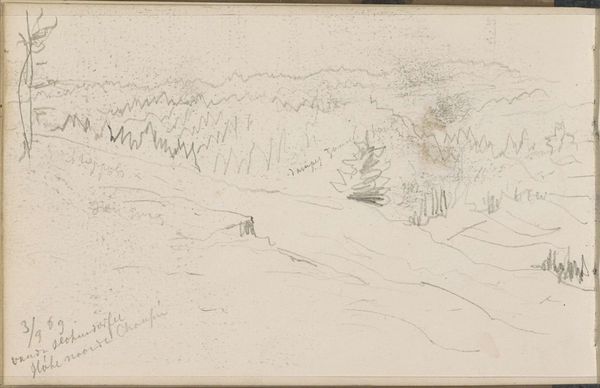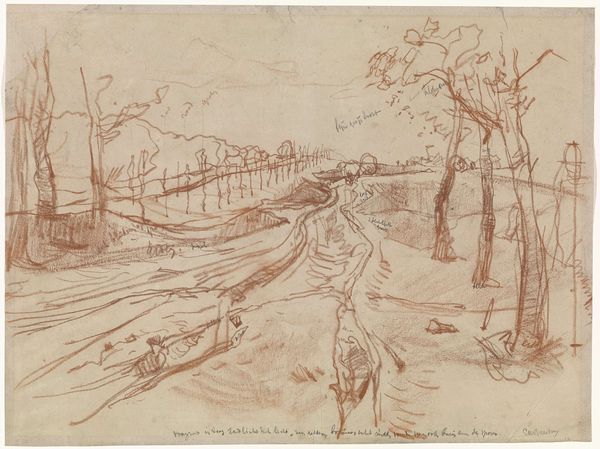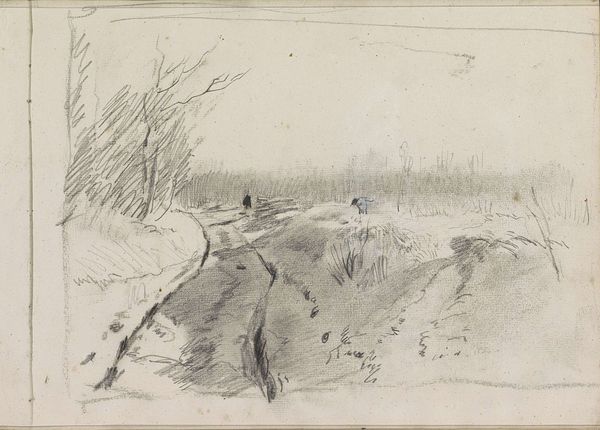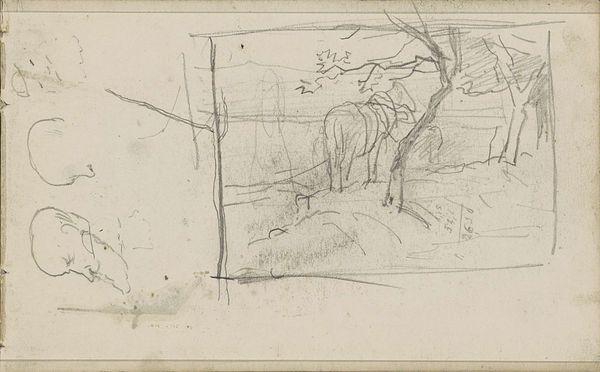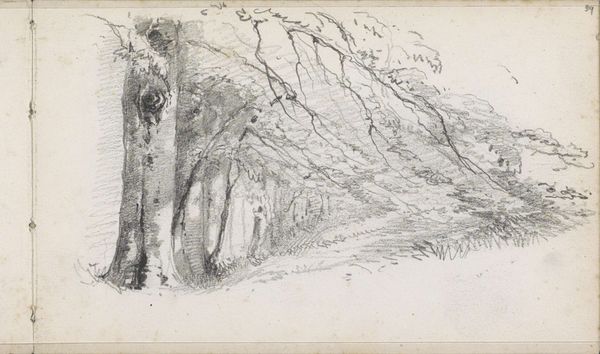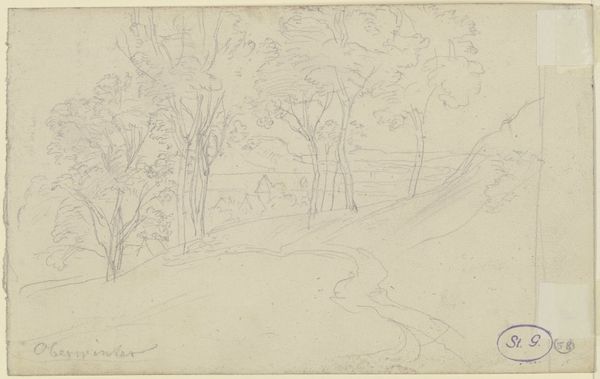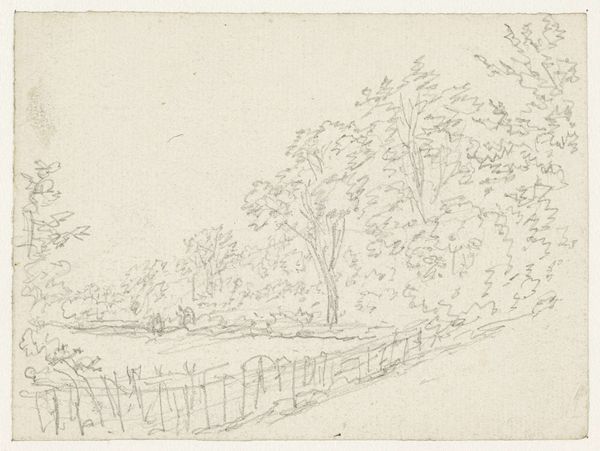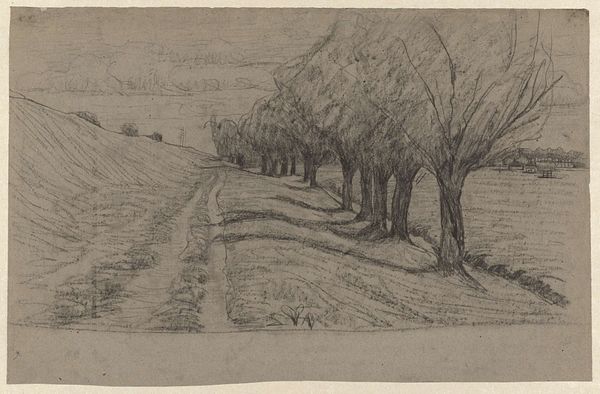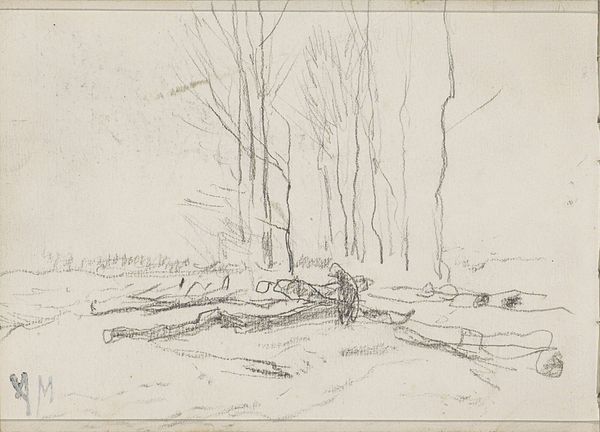
drawing, pencil
#
drawing
#
landscape
#
pencil
#
realism
Copyright: Rijks Museum: Open Domain
Editor: Here we have Johannes Tavenraat’s "Landweg op de dijk in Capelle aan den IJssel," created in 1865 with pencil on paper. It strikes me as a very direct, almost utilitarian depiction of the landscape. What do you see in this piece? Curator: Well, immediately I'm drawn to the immediacy of the materials. A humble pencil drawing, depicting a scene in Capelle aan den IJssel, highlights the artist's relationship to the land and labor. Instead of glorifying nature, it shows how infrastructure like the dike shapes the environment and lives of people. Editor: So, it's about the infrastructure rather than just the beauty of the landscape itself? Curator: Exactly. The choice of pencil—an easily accessible, portable tool—also suggests the drawing might be a study for something else, like a painting or a print. This blurring between the sketch and the final product shows the evolution in valuing “high art” versus craft. The materiality itself speaks to labor and a shifting hierarchy in the art world. Editor: That’s interesting, because I was viewing it simply as a nice landscape. I hadn't thought about the implications of pencil versus paint. Curator: And who would have been able to own or consume these images or products from that period, considering the class, economy, and gender constraints present at the time? Editor: Good point! This artwork is simple, but by viewing its historical materials, one can dive deep into social context and artistic approach of its era. Thank you for that view. Curator: Likewise; hopefully more viewers now contemplate that "humble" objects and materials have significant artistic, cultural value beyond what we assume.
Comments
No comments
Be the first to comment and join the conversation on the ultimate creative platform.

